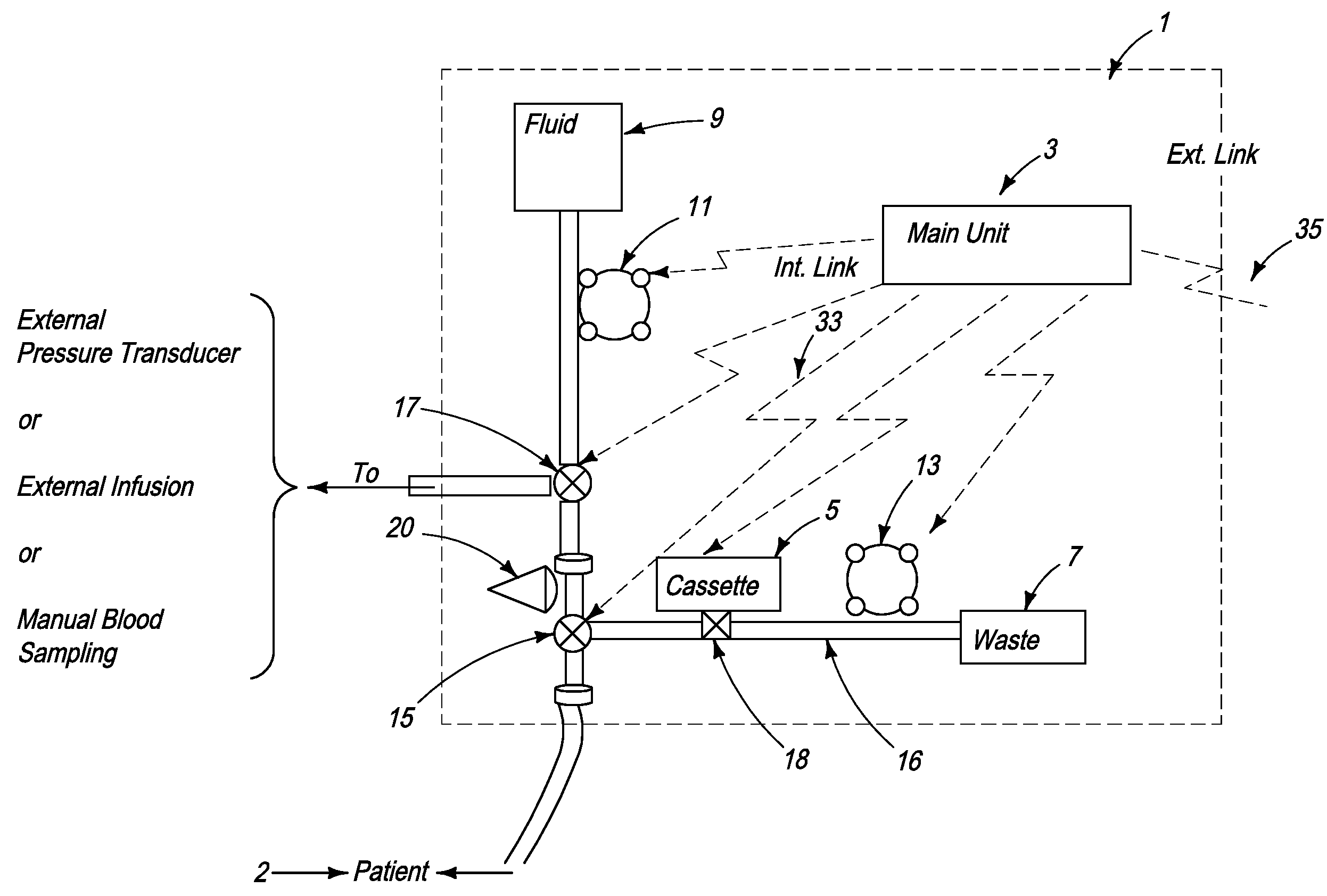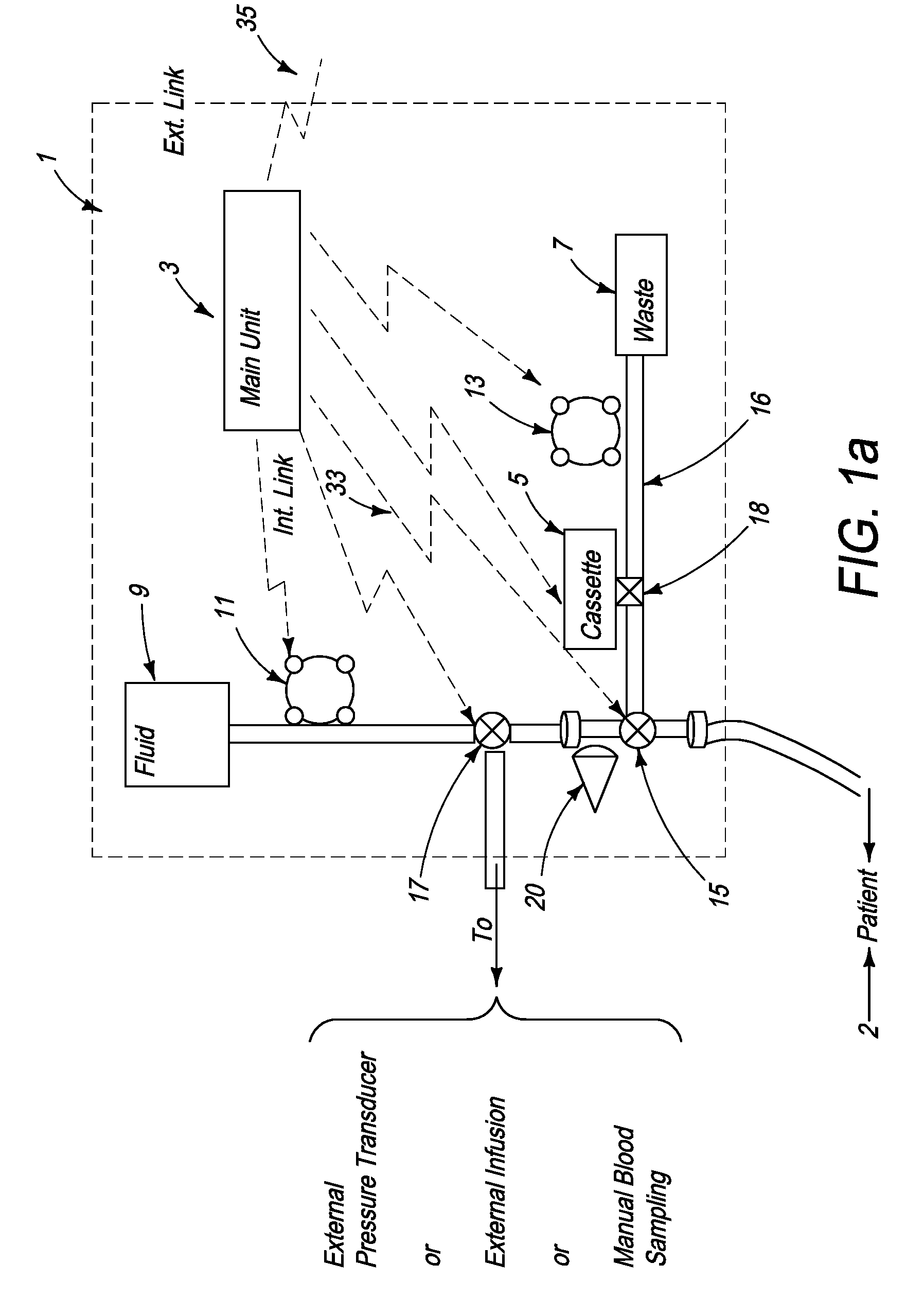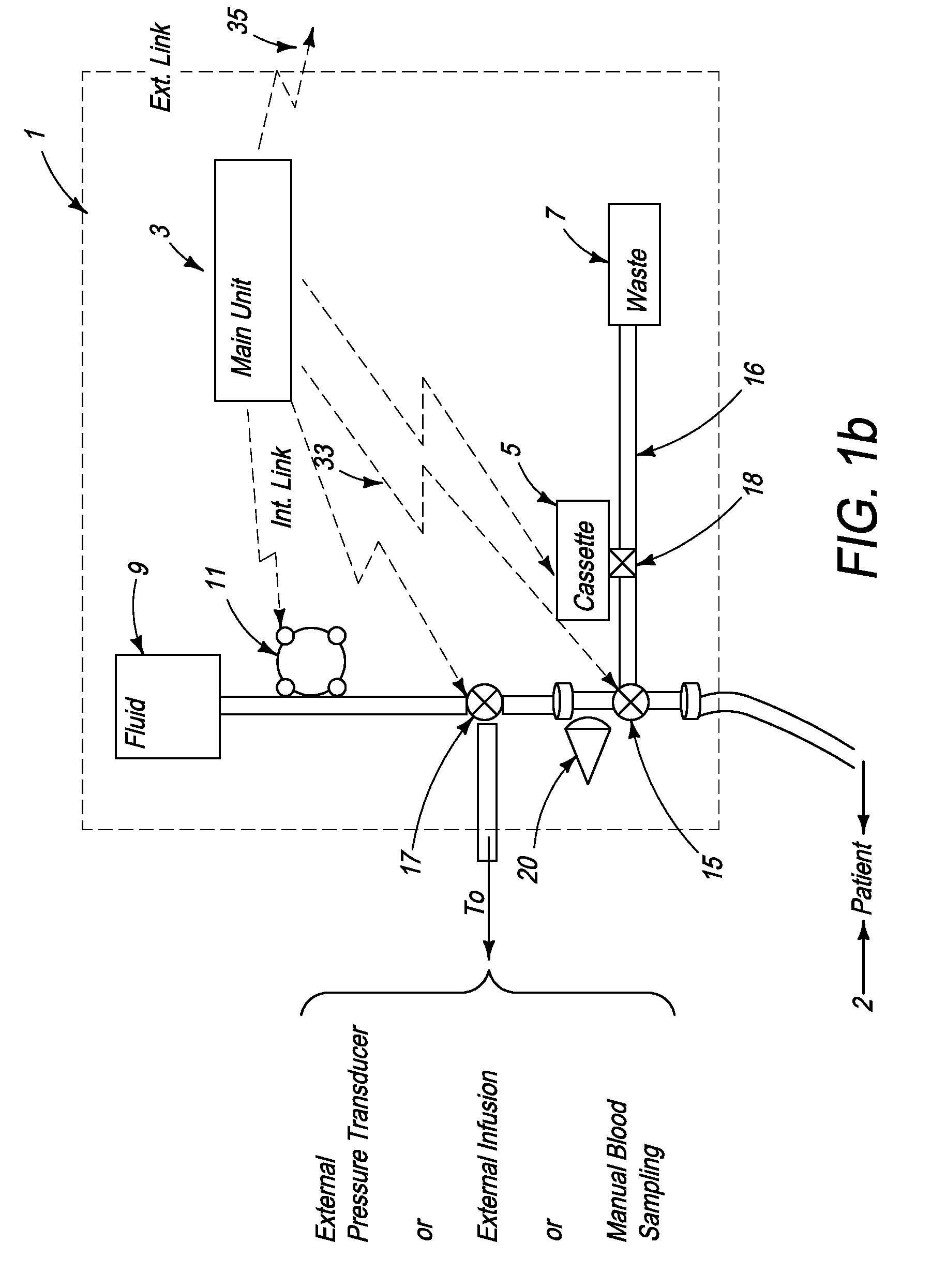Blood monitoring system
a blood monitoring system and blood constituent technology, applied in the field of blood monitoring systems, can solve the problems of frequent change of blood analytes and parameters, difficult monitoring of blood constituents, and difficulty in so as to improve the accuracy of predicting whole blood glucose level
- Summary
- Abstract
- Description
- Claims
- Application Information
AI Technical Summary
Benefits of technology
Problems solved by technology
Method used
Image
Examples
first embodiment
[0157]FIG. 2a schematically illustrates a signal analyzer and a sensor used with the automated blood analysis device of the present invention. In this embodiment, sensor 19 is preferably a single use electrochemical sensor capable of detecting the presence and / or measuring the level of an analyte in a blood sample via electrochemical oxidation and reduction reactions at the sensor. Electrochemical sensor 19 provides electrical input signal(s) to a signal analyzer 21, which converts these signal(s) to a correlated usable output, which can be, but is not limited to, an amount, concentration, or level of an analyte, such as glucose, in the patient blood sample. Main unit 3 ensures that electrochemical sensor 19 is maintained in direct contact with the blood sample until the electrical input signals reach a steady state condition, and signal analyzer 21 measures the required blood analyte(s) and blood parameter(s). The required time period for sensor 19 to be in contact with a blood sam...
second embodiment
[0160]FIG. 2b schematically illustrates a signal analyzer and a sensor used with the automated blood analysis device of the present invention. In this embodiment, sensor 19 is preferably a single use optochemical sensor capable of detecting the presence and / or enabling measurement of the level of an analyte in a blood / plasma sample via optochemical oxidation and reduction reactions at the sensor.
[0161]For example, when using enzymatic reactions to measure a blood analyte, a component is added to the enzymes, which results in an optically measurable color change as a product of the reaction. Either an optical detector or a combination of a light source and an optical detector are used for measuring the blood analyte by measuring the color, and more particularly, color change, at the sensor.
[0162]In a third embodiment (not shown) sensor 19 may optionally be a surface or miniature container, such as but not limited to a capillary tube, enabling storage of the blood sample for optical m...
PUM
 Login to View More
Login to View More Abstract
Description
Claims
Application Information
 Login to View More
Login to View More - R&D
- Intellectual Property
- Life Sciences
- Materials
- Tech Scout
- Unparalleled Data Quality
- Higher Quality Content
- 60% Fewer Hallucinations
Browse by: Latest US Patents, China's latest patents, Technical Efficacy Thesaurus, Application Domain, Technology Topic, Popular Technical Reports.
© 2025 PatSnap. All rights reserved.Legal|Privacy policy|Modern Slavery Act Transparency Statement|Sitemap|About US| Contact US: help@patsnap.com



